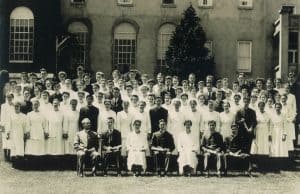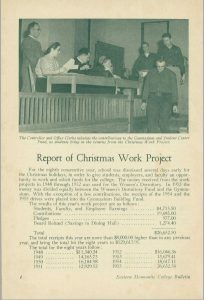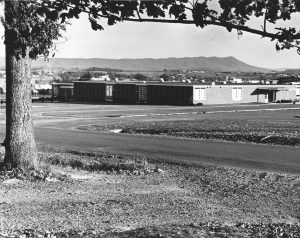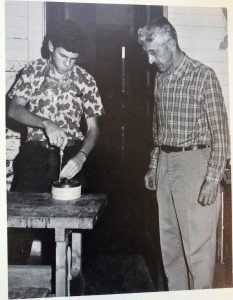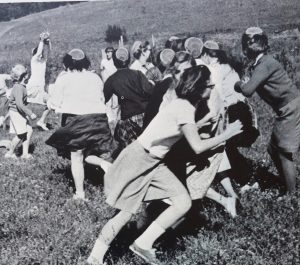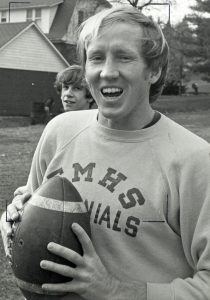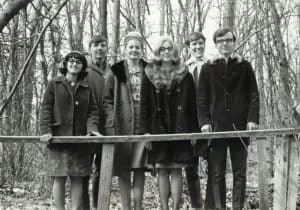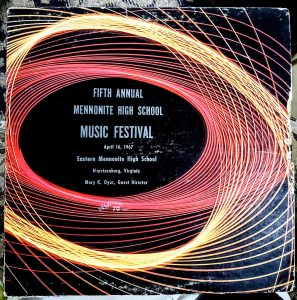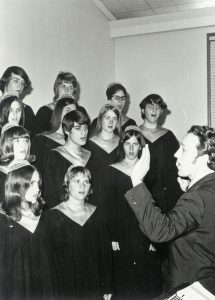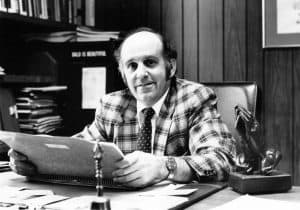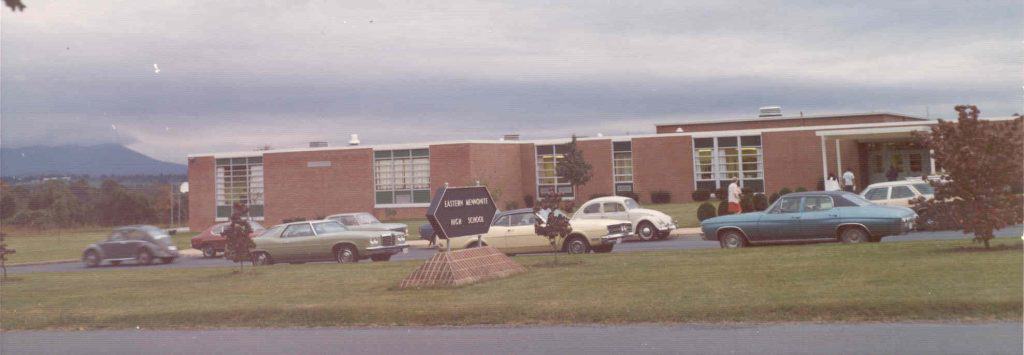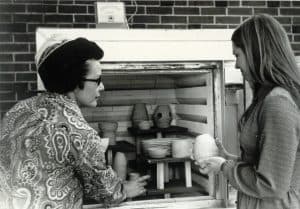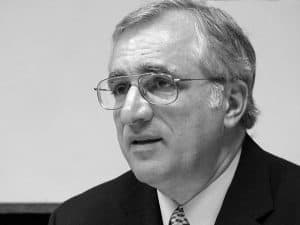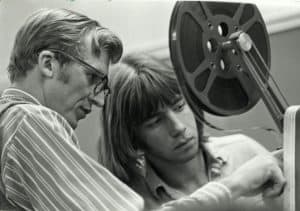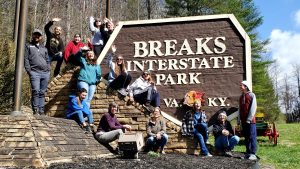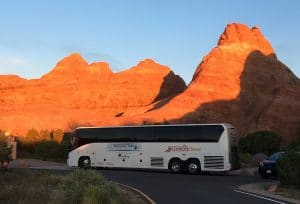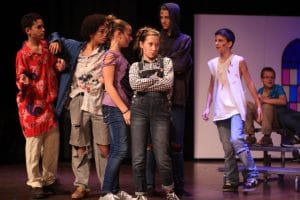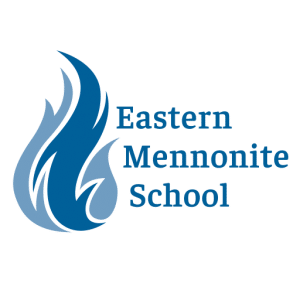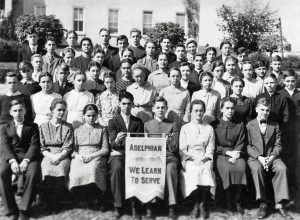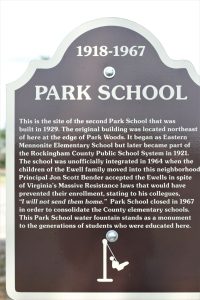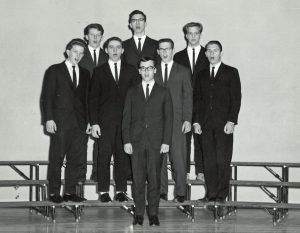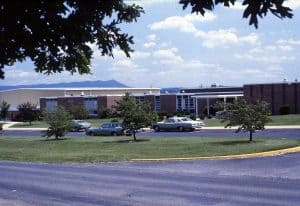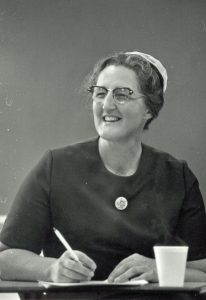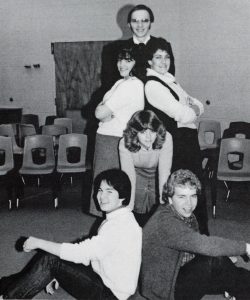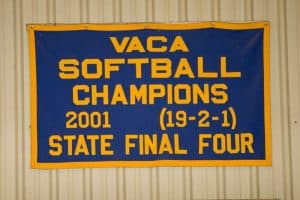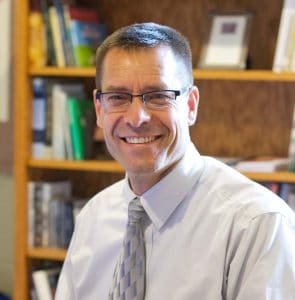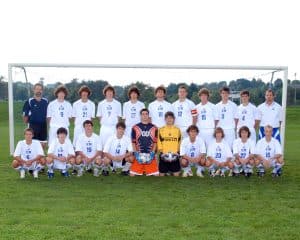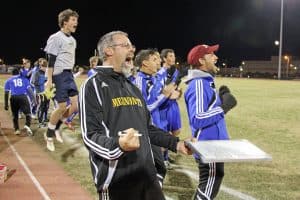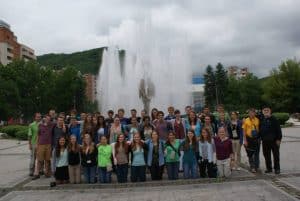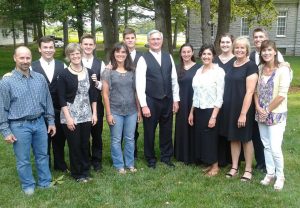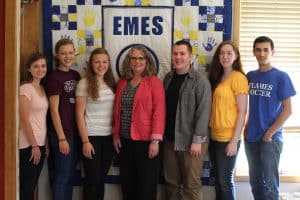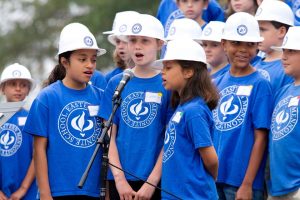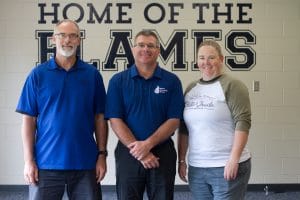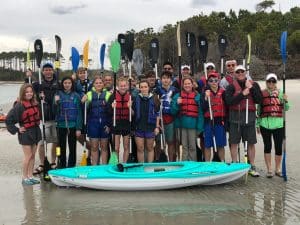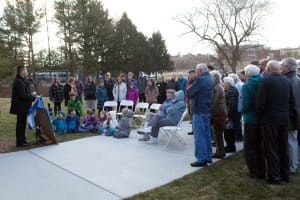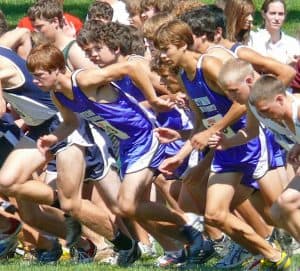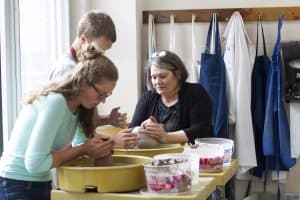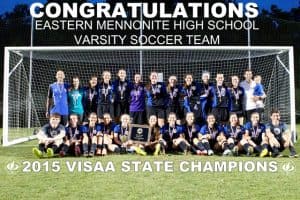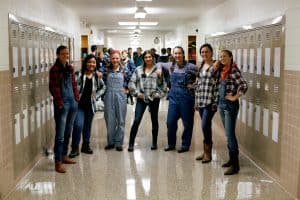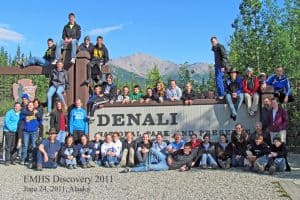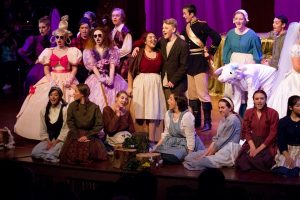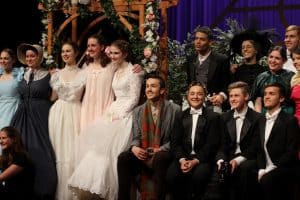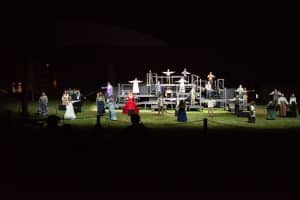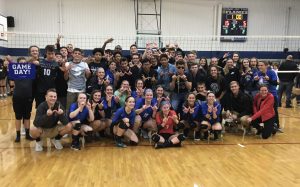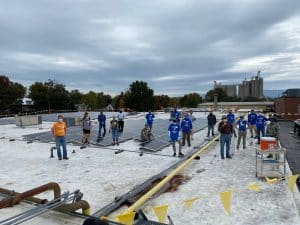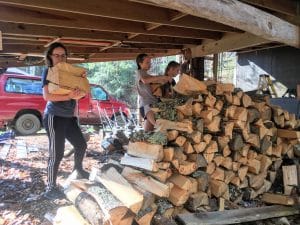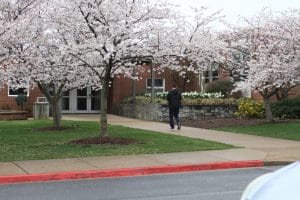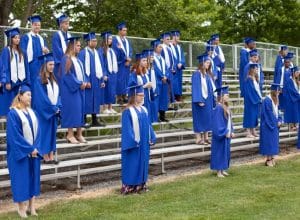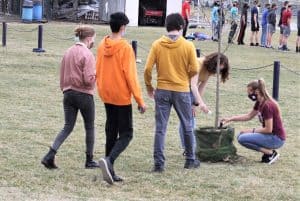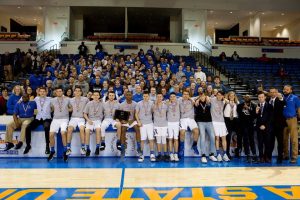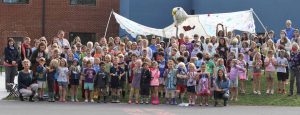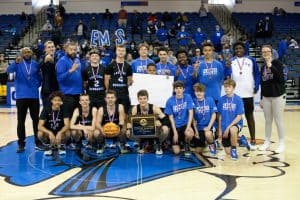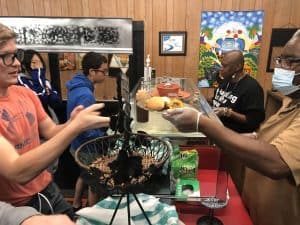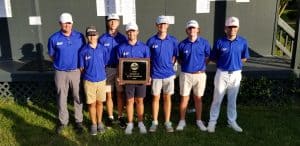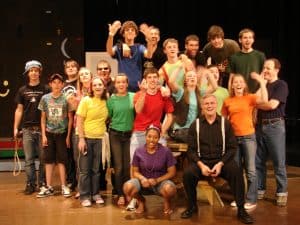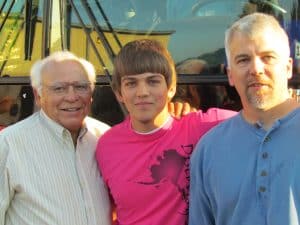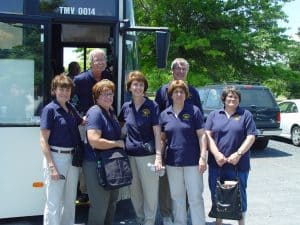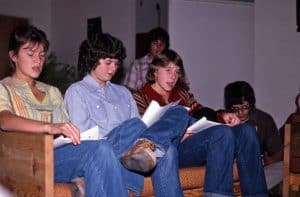Our School’s History
In order to tell the story of our school's history, we must first acknowledge the people who were here before us. The indigenous tribes occupying the Shenandoah Valley in the long period prior to the arrival of English settlements include the Iroquois (also called the Six Nations) and Shawnee nations as well as the Catawba and Cherokee nations of the south and the Delaware and Susquehannock nations of the north.
Eastern Mennonite School was established in 1917 in the city of Harrisonburg, Virginia, Rockingham County, by Mennonite business people, educators, pastors, and other supporters to educate students at an equivalent of today’s junior- and senior-high level.
The school now serves nearly 380 K-12 students, joining church and home to educate students of many backgrounds, traditions and cultures. The following chronological list captures some of the milestones of the school’s rich history.
1917 -- The school is launched as a Bible school offering music, Bible and vocational training. See this timeline with links to many additional articles created by Eastern Mennonite University for the 2017-18 centennial year.
1921 -- The high school program is accredited by the State of Virginia. Choral singing was a core value from the beginning with choirs leading worship in area congregations then and to this day.
1927 -- An early adapter of sustainability efforts, the school requires students to pay two cents a term for every watt of light above 40. (See the Eastern Mennonite University sustainability timeline.)
1930 -- During the Great Depression (1929-1933), faculty and their families living on campus maintained gardens and kept goats, chickens, and even a cow or two on campus.
1930s -- Seniors enjoy the first annual Senior Trip to Washington, DC. A School Day Out at Highland retreat during the first week of school takes place. Students serve others during the first Community Service Day. Student Council Organization plans activities such as an annual hike to Massanutten Mountain.
1946 -- The first international students are admitted to the school: a Russian man from Belgium and a brother and sister from China. Learn more on this diversity timeline on the EMU website.
1946 -- The agriculture curriculum includes a “home project,” designed for practical application of classroom learning in which students choose animals to work with, including broilers and laying hens, sheep, pig and heifers. This program lasts about two years and is dropped because of lack of interest.
1947 -- The school expands to a junior college and then a four-year program and earns formal accreditation.
1948 -- Students take part in the first Christmas Fund Drive to support the school by earning money and gathering donations for the school over Christmas break. The tradition continues.
1952 -- The high school agriculture program is revived, and farmland leased. Rural Life Week features an all-school visit to a Sparkling Springs farm, with demonstrations of bread-making, quilting, soap-making, rug-making and weaving. Dairy practices, stock-raising, soil conservation and tree culture were also demonstrated.
1954 -- Peggy Webb Howard is the first African-American to graduate from the college. Learn more.
1955-1990s -- The senior class travels to Harman, WVa., each Christmas to distribute gift baskets.
1956 -- The high school program is accredited by the Southern Association of Colleges and Schools.
1957 -- Harold D. Lehman is named high school director.
1959 -- The first issue of the school’s newspaper, The Windsock, is published with Miriam Campbell as editor. Digitized copies of all issues are available on the Eastern Mennonite University special collections website here.
1960s -- Athletic teams begin to compete with other schools, moving beyond an intramural program.
1961 -- Vesper Choir (now touring choir) added to the music curriculum. Read about the history of EMHS touring choir here
1962 -- The first piano is allowed on campus. Read a February 2023 article about an apology to the Chester and Myron Lehman family who were made to get rid of their piano in 1927 by Virginia Mennonite Conference.
1962 -- Jesse T. Byler is named high school director.
1963 -- Juniors plan a spring banquet to honor the senior class, the first Junior-Senior Banquet.
1964 -- The high school moves to its own space at 801 Parkwood Drive. Students transport library books down the hill from the college library to the new building during one memorable moving day. Read an article about a chapel presentation in 2019, recalling the move.
1964 -- John H. Krall is named high school director.
1966 -- Marvin Miller replaces Annette Wenger as choral director and hosts the Mennonite school choir festival that spring, one of the early North America-wide Mennonite choir festivals. The festivals continue annually until 2020 when COVID shuts it down. In spring 2023, EMS hosted five schools for a new start up model of the former festival.
Late '60s -- The school's industrial arts -- begun by Homer Mumaw as a "shop" class in a building near the college's administration building -- moved into the former Park School building. Park School was a public school located across the street from EMHS and used into the early 1960s.
1967 -- Orchestra program begins
1969 -- Samuel O. Weaver is hired by Myron Augsburger, college president, to lead the high school and further develop its identity as separate from the college.
1970s -- The school establishes fiscal independence from the college and builds support among Virginia Mennonite Conference churches. The college provides EMHS with Maplewood dorm to house students from across the United States, mostly from Mennonite hubs in Michigan, New York, Florida, Ohio, and Pennsylvania.
1971 -- Esther Augsburger '49 is hired as the first art teacher. Read about it here and watch an October 2022 Chapel service in her honor.
1971 -- EMHS varsity boys soccer team participated in the Bollingbrook Invitational Tournament in Petersburg., Virginia. In 1988 a new host took over and it became the St. Vincent Invitational. In 2001, EMHS took over hosting the popular and competitive event. And in 2021, EMHS hosted an alumni game during Homecoming to mark the 50th anniversary of the tournament.
1972 -- A fine arts addition is built on the east side of the school building.
1973 -- EMHS hosts its first invitational cross country tournament with a course through Park Woods. In the early 2000s the event moves to the Burtnee Farm in Penn Laird. The competition draws athletes from throughout the region and continued uninterrupted until the fall 2020 Covid interruption.
1974 -- Dorothy Shank is named the first female chair of the Board of DIrectors. She capably leads a 15-year process of moving the high school to independence from the college.
1976 -- A gymnasium is added to southeast side the building. The Board of Directors approves the Flames as the school athletic moniker and approves the first school logo, designed by Esther Augsburger.
Late '70s -- Mini-term experiences begin to provide opportunities outside of the classroom to learn a new skill with a focus on service learning, cross-cultural engagement and academic enrichment.
1981 -- The school graduates its largest class before or since, with 98 members.
1982 -- J. David Yoder is named principal.
1982 -- The school finally formally establishes a separate charter from Eastern Mennonite College (renamed Eastern Mennonite University in 1994).
1986 -- Touring Choir sang at the state convention of the American Choral Directors Association, the first of four times.
1987 -- A dining hall addition is built on the east side of the building, allowing students to remain on campus for lunch, rather than walking to the college dining hall.
1988 -- The industrial arts program moved from the old Park School into a new building on campus and the name was changed to "technology education."
1990 -- Touring Choir takes its first international trip to Germany. International choir trips followed in 1993, '95, '98 and then every other year until the summer of 2020 when COVID came on the scene. A trip to Puerto Rico took place in a "post-Covid" world in spring of 2022.
1996 -- Maplewood dorm is returned to EMU and the school closes is boarding operation for students, moving to a home-based model for international and other boarding students.
1997 -- Touring Choir sang at the American Choral Directors Association Southern District convention in Charleston S.C. It was the first time any high school choir from Virginia sang at an ACDA conference. Choir also sang for the national Kodaly Conference.
1998 -- Myron Blosser ’79, biology teacher, leads the first Coast-to-Coast trip immersion learning experience for high school juniors and seniors.
1998 -- Mini-term becomes E-Term (Experiential Learning). The change better captured in a more focused way what had actually been occurring in mini-term courses.
2002 -- The school is accredited by Virginia Association of Independent Schools.
2003 -- Paul G. Leaman is hired as principal and later named head of school.
2003 -- Myron Blosser and Elwood Yoder lead the second cross-country immersion trip for juniors and seniors called Lewis and Clark. This then becomes the Discovery program which takes place every other summer through 2020 when COVID brought the run to an end.
2004 -- EMHS Board of Directors passes a motion to reaffirm its intent to open an elementary division in the fall of 2005.
2004 -- Touring Choir travels to China. Subsequently, choir begins traveling to European destinations every other year.
2005 -- After a successful capital campaign, a fine arts wing and 660-seat capacity auditorium are constructed; it is designed by architect Lori Snyder Garrett, EMHS class of ‘79.
2005 -- EMES opens its doors with 24 students on the ground level of Lindale Mennonite Church. Read a reflection on the beginning of that project and the early years.
2006 -- The school performed Les Misérables and began performing a musical theater production annually. See a listing here.
2008 -- The elementary, middle and high school divisions come together under the name “Eastern Mennonite School” with the adoption of an updated seal. Yellow and gold colors that had been used with EMS blue, particularly for Flames athletics, are phased out of usage.
2013 -- The school is accredited by Mennonite Education Agency.
2018 -- An updated logo and brand are launched after input from alumni, faculty, staff, students, and friends.
2018 -- The "tech ed" program and space move to robotics programming in cooperation with the math and physics departments.
2019-2022 -- A new Strategic Pathways guiding document is approved by the Board of Directors after input from current families, students, alumni, and supporters.
August 2019 -- Donors provide support needed to build a bridge between the two buildings connecting the school's campus.
Dec. 2019 -- After a successful capital campaign, Eastern Mennonite Elementary moves into the newly renovated former Menno Media building, the division’s first dedicated space
March 2020 -- The school closes its doors on March 13, 2020 in response to the COVID-19 pandemic, re-opening the following fall in person with significant COVID mitigation efforts.
June 2020 -- Following the widespread awakening following the death of George Floyd, EMS launches a Racial Equity Team. By 2022 the team -- with representatives from each division -- was called an Equity Team with a broader focus of moving forward on the school's vision to be "a learning community where every student belongs, thrives and lives God's call."
October 2020 -- 35 volunteers install 357 solar panels atop the school’s roof to offset nearly one third of the total electricity used by the school facilities. See news coverage, a time-lapse video of the installation, and live data on power generated here.
Do you have an addition or correction for this timeline? Email your information to advancement@easternmennonite.org
